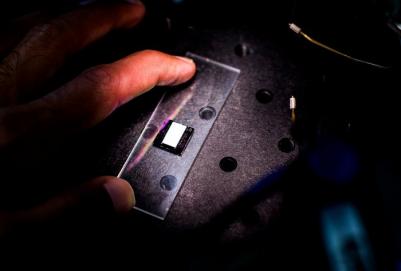Researchers from the University of Michigan developed a graphene-enabled wearable vapor sensor - that can be used for continuous disease monitoring, for diabetes, high blood pressure, anemia or lung disease. The sensor can detect airborne chemicals either exhaled or released through the skin.

The researchers can sense several biomarkers that indicate the presence of diseases. For example, acetone is a marker of diabetes. It can also detect nitric oxide and oxygen which abnormal levels may indicate high blood pressure, anemia or lung disease.
The sensor uses a technique called heterodyne mixing - which looks at the interaction between the dipoles associated with these target molecules and the nanosensor at high frequencies. They use graphene to enable this technique, and it leads very fast response times (tens of a second) - much faster than current technology (which requires tens of even hundreds of seconds).